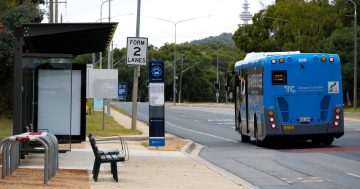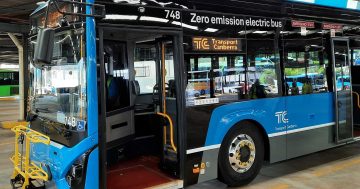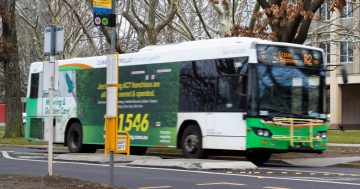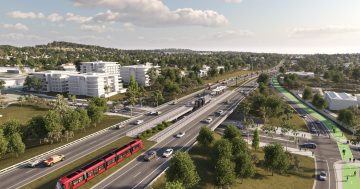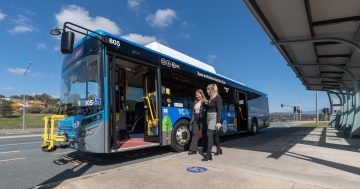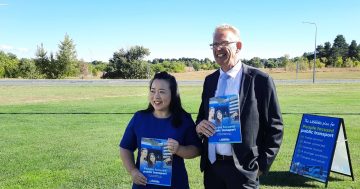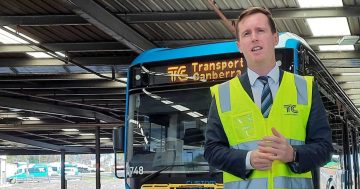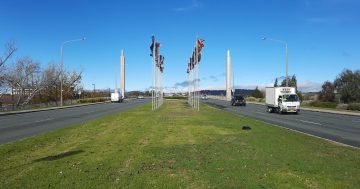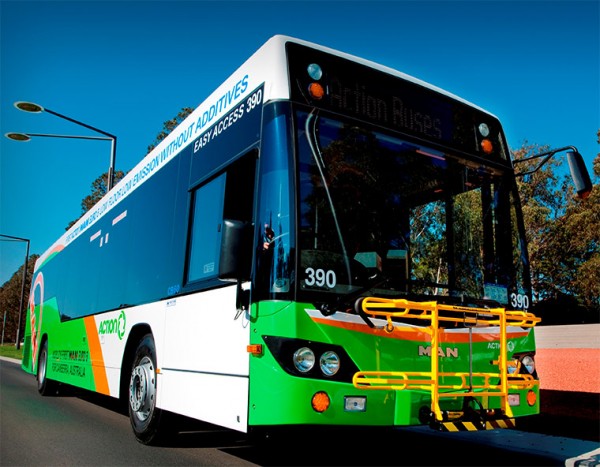
More frequent and faster services is the key to more people taking public transport. File photo.
Canberrans have an understandable desire for more frequent and faster bus services and it seems they may be willing to accept longer distances to bus stops – and as a result, fewer of them to achieve that.
The findings from the first phase of the ACT Government’s consultation for a new public transport network that will integrate buses with light rail announced today (Friday), shows Canberrans are prepared to walk further to a bus stop if services were more frequent and journeys faster.
They also want more up-to-date information on services and routes via mobile apps and digital displays.
The findings show Canberrans unsurprisingly want public transport to be quicker and more frequent and that this is the key to getting more people to use public transport but the trade-off will likely be fewer bus stops and routes, which could pose difficulties for the very young, elderly and people with a disability.
Conducted in late 2017, the consultation sought feedback from the community and stakeholders on how best to provide local and suburban connections to the Rapid network and how to improve the overall experience of public transport.
People were engaged through pop-up stalls, an online survey and at community group briefings. A total of 678 people filled in the online survey, with 82 per cent of respondents saying they currently used public transport.
In answer to the question “Would you walk further to a bus stop if the bus came more often and got you to your destination faster?”, 80 per cent of respondents said yes, which the consultation report said ‘clearly shows that most people would be willing to walk further to connect to the new Rapid Network’.
Minister for Transport Meegan Fitzharris said the first phase of consultation told the Government that as Canberrans moved away from a ‘nine-to-five’ lifestyle, people wanted more services at all times of the day and week.
“We can achieve this by reducing duplication across existing routes, freeing up more buses and providing more frequent services. Integrating light rail with our bus network will also free up buses and provide more direct services to key destinations,” she said.
The report said most respondents indicated that they would generally prefer to access information about timetables and route changes via digital display apps to plan their journey.
But more than 40 per cent preferred traditional printed timetables, “suggesting this remains an important source for those who cannot access digital information and as a backup if there is a technological failure”.
There was strong support for Transport Canberra investigating Flexible Bus services for residents with limited mobility (60.91 per cent), ride-sharing services for large employment areas/workplaces (39.82 per cent) and Demand Responsive Services for residents who cannot access regular bus services (50.44 per cent).

Ms Fitzharris said the introduction of two new Rapid services last year had already had a great response, with more and more people using the new services every day.
“But while 82 per cent of respondents said they currently use public transport, we know only 7.1 per cent of Canberrans took public transport to work on Census Day 2016,” she said.
“The bottom line is we need more Canberrans to catch public transport.”
She said the trend was encouraging with Transport Canberra on target to meet or exceed its target of 18.4 million boardings.
“The Green Rapid from Woden through the Inner South, in particular, is very popular, and is already one of the busiest routes on the network. In fact, we have had 15 of the 20 busiest days on the Transport Canberra network since 2011, so far this year,” she said.
“I’m confident that the more we provide frequent, direct bus services across Canberra, the more people will choose to leave the car at home and catch public transport.”
The next stage of consultation on the integrated public transport network will take place in May before a new network is introduced.
It will include the detail of the new and updated Local and Rapid routes, and also cover school services and ways to improve timeliness in the wake of recent controversy over buses arriving late at schools.












